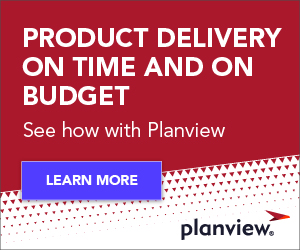
Does your organization create well-articulated strategies that paint a vision of growth and exciting innovation? Do you and your team understand how those break down into what needs to be done in order to actually achieve them? Are you left wondering who is working on those while your “strategic projects” feel more disconnected and less, well, strategic, from those objectives the executives have communicated?
You aren’t alone. Various sources cite that only somewhere between five to 16 percent of the front-line employees and supervisors understand their company’s strategy.*
So the individuals in your organizations make thousands of decisions every day based on their limited information and perception of priorities. This means they could be unwittingly working against your strategy.
Break Down the Silos
As a product manager who values prioritization and planning to the core, even I have to remind myself to step back when prioritizing my part of the product. I must ensure that everyone on our team is executing the overall strategic plan for Planview’s portfolio solutions. This requires assessing priorities across all of Planview Enterprise and even the other products in our company’s portfolio. If I’m not aware of what the priorities are across our areas, what the connections are and the touchpoints, I end up working in a silo and could very well hinder innovation!
Breaking down the silos in your organization is critical to helping the different areas understand their roles and responsibilities. What products are going to be created or impacted? What applications or technologies are being created, enhanced and integrated? What is the value of and the expected growth and return on these efforts? What solutions will be taken to market? How will we take them to market? Then how will we manage and continue to grow them?
Operationalize Your Growth Strategy and Expand Into a New Market
For instance, let’s say your company has a strategy to grow revenue 25 percent by expanding into a new market. This is a complex undertaking involving multiple departments such as development, engineering, sales and marketing. It involves not just creating the product but also everything else needed to take it to market. This could include building a retail presence, generating marketing campaigns, developing specific product apps, creating distribution channels and much more.
The key is to connect your growth and innovation strategy to execution to make it real. All employees and departments must know what they need to do and when they need to do it. You need to align priorities across the organization and ensure that individuals aren’t undermining the company strategy for other priorities.
Connect Strategy with Execution: Planview Enterprise 12
This is what we have done in Planview Enterprise 12, elevating portfolio management in order to allow information to flow across the organization horizontally, not just vertically. With version 12 you can:
- Drive growth and innovation by managing strategy and building out the programs, projects and all various outcomes that make up your investments, including products, services, technologies, applications, locations, etc., in order to map out and then manage the entire schedule;
- Use strategic roadmaps to manage program, outcome and project release schedules, bringing all areas of the organization together; and
- Fully integrate financials between strategy, initial investments, incremental product revenues and the ongoing support of outcomes delivered. You can understand what projects/solutions are going to result in the highest ROI for your organization.
This ensures that everyone not only understands the organization’s priorities but also the roadmap showing how to get there. The roadmap should show priorities and deliverables across products and technologies, including key milestones and releases for strategic coordination. Then, you can leverage agile processes to bring in real-time data to navigate the strategic roadmap, handling all the twists and turns that can develop throughout execution. As new information develops, schedules shift and things adjust, you can use your strategic portfolio roadmap to adapt and focus prioritization and communication to successfully deliver strategic execution.
Portfolio management can show its muscle by helping organizations break silos, create capacity for growth – via innovation, M&A and entering new markets – and also execute on it to achieve strategies. Take those well-articulated, inspirational visions off the wall and turn them into actionable strategic plans!
How can you transform ideas into executable, strategic plans? The answer is 12 – Planview Enterprise 12.
*Harvard Business Review: Making Your Strategy Work on the Frontline by Amy Gallo and Why Strategy Execution Unravels – and What To Do About It by Donald Sull, Charles Sull, and Rebecca Homkes




